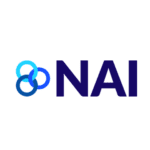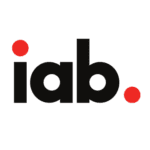How Effective are Geotargeted Customer Acquisition Platforms?
Geotargeted customer acquisition platforms leverage location data to deliver tailored marketing campaigns to specific geographic regions, but how effective are these platforms in driving customer acquisition? This blog post will explore geotargeted customer acquisition platforms’ potential benefits and limitations and examine their overall effectiveness.
Understanding Geotargeted Customer Acquisition Platforms
Geotargeted customer acquisition platforms utilize advanced technologies and data analytics to identify and target potential customers based on their geographic location. These platforms gather information from various sources, such as IP addresses, GPS data, and user registrations, to determine the physical location of individuals. With this data, businesses can create highly targeted marketing campaigns to reach potential customers in particular regions.
There are a multitude of specific benefits involved:
Enhanced Targeting and Personalization
One of the primary advantages of geotargeting is its ability to deliver personalized content and offers based on a specific region’s local preferences, needs, and cultural nuances. By tailoring marketing messages to resonate with the local audience, businesses can significantly increase the likelihood of customer engagement and conversion.
Increased Relevance and Engagement
When customers receive advertisements or promotions relevant to their immediate surroundings, they are more likely to pay attention and take action. Geotargeted customer acquisition platforms enable businesses to provide location-specific information, such as local events, deals, or store openings, which can create a sense of urgency and increase customer engagement.
Efficient Resource Allocation
Businesses can optimize their marketing budgets and allocate resources more efficiently by focusing marketing efforts on specific regions. Geotargeting allows for a more precise allocation of advertising spend, reducing wastage and improving overall return on investment (ROI).
Competitive Advantage
Geotargeting gives businesses a competitive edge by enabling them to penetrate new markets or establish a more substantial presence in their existing markets. By tailoring marketing strategies to specific regions, businesses can better understand local competition and consumer behavior, ultimately allowing them to refine their approach and gain an advantage.
A Real-World Example
You guessed it, Tiffany’s Gourmet Ice Cream sells gourmet ice cream. They have a storefront in a historic downtown area with a lot of summer foot traffic, but in-store customers tend to die off once fall starts. To stay in the black during the other half of the year, the team at Tiffany’s has decided to start selling their ice cream in cartons all around the US, setting up deals with grocery stores to carry their line.
The team at Tiffany’s already knows that they tend to sell a lot of packaged ice cream around holidays, especially their two top-sellers at those times, especially their holiday flavors like pumpkin spice and peppermint. Working with Intersect, Tiffany’s sets up a geotargeting campaign focusing their efforts on shoppers inside of grocery stores, females aged 35-65, knowing that they will likely be the shoppers of household treats for holiday dinners and holiday festivities.
By sending ads straight to the phone screens of willing shoppers, Tiffany’s does a few things; exposes their brand to new customers and reels interested shoppers in an environment where buying their ice cream is easy.




